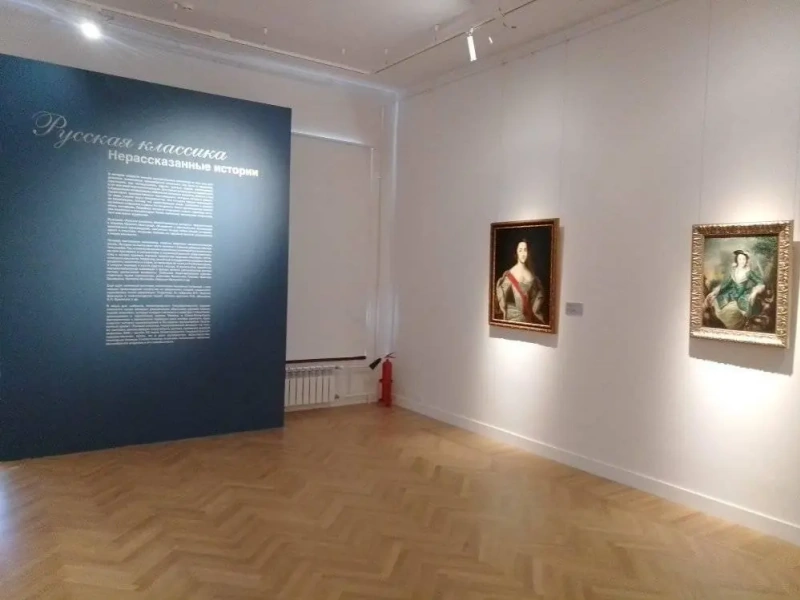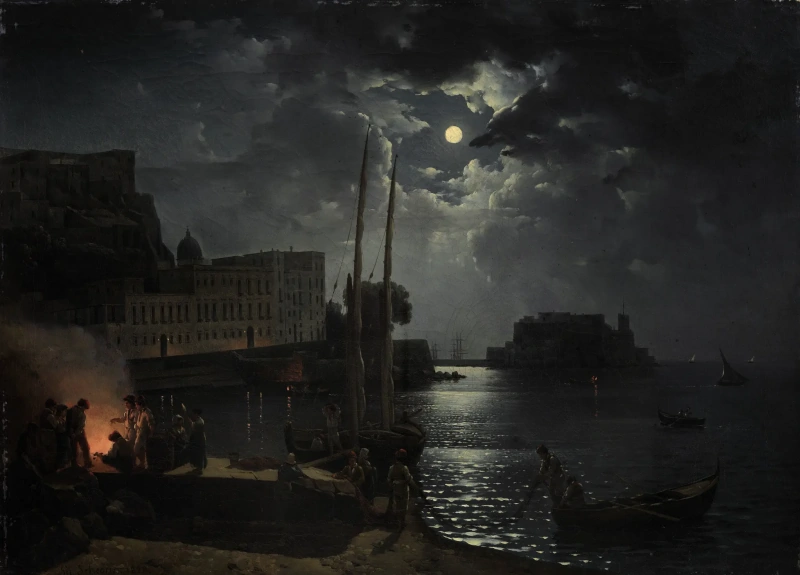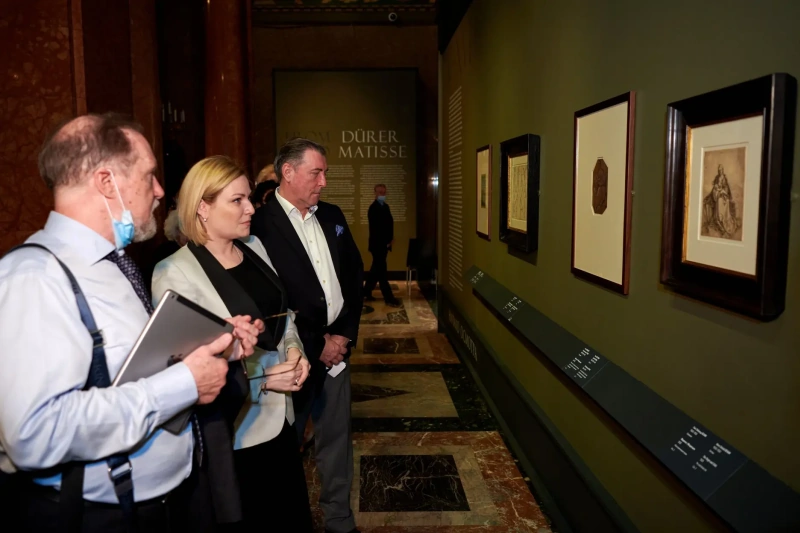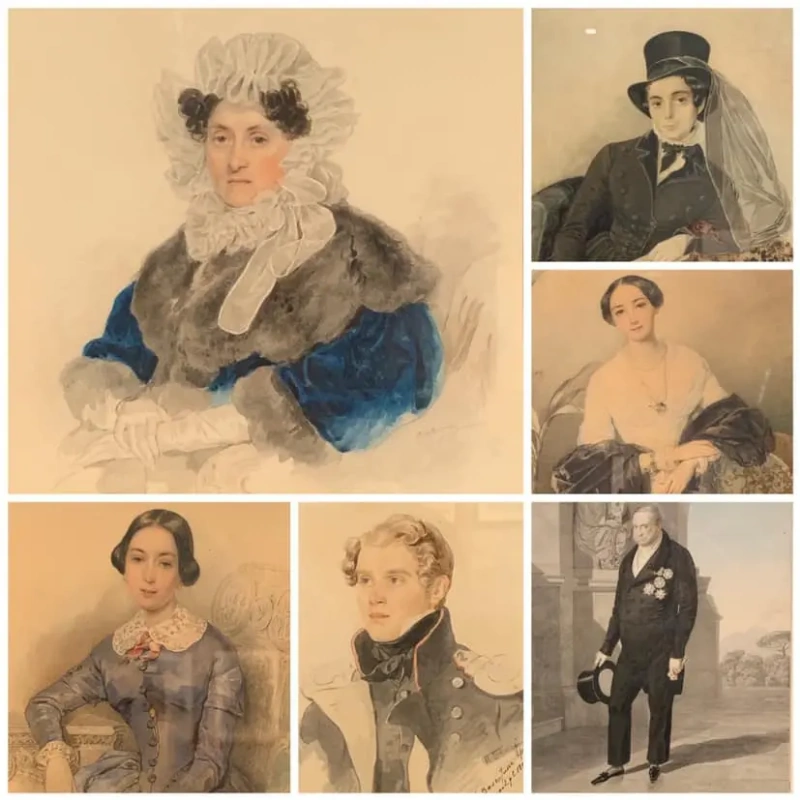log in
Enter site
Login to use Arthive functionality to the maximum
Karl Pavlovich Bryullov (12 December 1799 (St. Petersburg) - 11 June 1852 (Manziana, Italy)) was a famous Russian painter, monumental painter, watercolorist, and the master of portraiture. He also received several awards of the Academy of Arts for his paintings. Bryullov was a gold medalist of the exhibition held in 1834 in Paris. A whole galaxy of Russian artists and foreign painters grew up on Bryullov's work.
Features of the artist Karl Bryullov: art historians ascribed his style of painting to academicism and romanticism, but the talent of the painter went far beyond the generally accepted definitions. Being in constant search of his own style, the artist experimented with various techniques and materials. For Bryullov, painting was not only a tool for depicting the world around him, but also a means of self-expression. In his works, he managed to organically combine the heritage of the great masters of antiquity and the Renaissance epoch with his own view on painting.
Famous paintings by Bryullov: “The Narcissus”, “Italian Morning”, “Italian Midday”, “Horsewoman”, “The Last Day of Pompeii”, as well as portraits of I. Krylov, A. Golitsyn, A. Bryullov, etc.
Bryullov's studying at the Academy lasted until 1821; during that time, he created his first paintings, such as “The Narcissus” (1819) and “The Genius of Art”, which was recognized by the Academy Council as a model for copying. Easily dealing with all tasks and being pleasant in communicating with young people, Bryullov earned the favor of teachers and classmates and often helped the latter by correcting their examination papers.
At the end of his studies, Bryullov received a gold medal, which gave him the right to the status of a pensioner with a foreign trip, but the president of the Academy made a strange decision: to leave the graduate for 3 years on the pretext of improving skills. A. Yermolaev, a painter who had not got that good of a skill, was chosen as a teacher for Bryullov. Karl Pavlovich Bryullov’s request to change the teacher was rejected, and then the painter refused to go abroad.
An unexpected offer from the Imperial Society for the Encouragement of Arts gave an opportunity to the young painter to believe in himself once again. To demonstrate his skills, Bryullov had to make several paintings on given topics, and in return the Imperial Society promised to provide financial support for a trip abroad. The conditions of the trip included mandatory reports of what he saw and new paintings, which the artist regularly had to send to the Society. Such a chance was unique enough for the artist Bryullov, who was just starting out, and he tried to use it by working on the paintings “The Repentance of Polynik” and “Oedipus and Antigone”, which convinced the commission to make the right choice.
Having changed the name of Bryullo to Bryullov in 1822, the artist and his brother Alexander went on a fascinating tour around Europe. Upon arrival in Rome, the painter received the first task from the Society to copy Raphael's “Athenian school”. With that work he completed his apprenticeship: the subsequent paintings by Bryullov with the names telling us about where the genius of the brush caught inspiration from, were destined for success. Thus, his “Italian Morning”, which was painted in 1823, caused huge excitement in St. Petersburg: Bryullov’s contemporaries were blown away by the freshness of his style and the originality of the interpretation of the ordinary subject. The Imperial Society presented that work as a gift to Nicholas I, who awarded the artist a diamond ring and commissioned him a couple of paintings. In 1827, Bryullov painted “Italian Midday”, but the Imperial Society criticized the work relying on the dissatisfied opinion of the emperor, so the painter decided to stop working with the Society.
In addition to portraits, Bryullov also painted in watercolor – his works were juicy, airy, filled with the sun and romanticism. Bryullov's watercolors were characterized by a specific style of painting: there was a combination of contrasting color spots, with which the artist was able to convey the mood of the people depicted and the charm of nature.
Having returned to St. Petersburg, Karl Bryullov took a position of the head of the historical class at the Academy. He was popular among the local nobility as a skilled portrait painter – the portraits of I. Krylov, V. Zhukovsky, N. Kukolnik, Yu. Samoilova, A. Strugovshchikov and other contemporaries’ portraits came out of his brush. He also participated in the painting of the Lutheran church and St. Isaac's Cathedral, but due to difficult conditions that negatively affected the artist’s health, he stopped working on it.
At the insistence of doctors in 1849, the artist Bryullov went to Madeira to improve health. A year later, he came to Italy and, having lived there until 1852, died of a suffocation in the town of Manziana not far from Rome. The works created by the painter in the last years of his life are distinguished by a peculiar romanticism and theatricalization.
On this page we have collected for you the best paintings by Bryullov, which the artist created at different periods of his career. You can see the reproductions in high resolution, register on our website and enjoy the works that are rightfully included in the world treasury of art.
Read more
Features of the artist Karl Bryullov: art historians ascribed his style of painting to academicism and romanticism, but the talent of the painter went far beyond the generally accepted definitions. Being in constant search of his own style, the artist experimented with various techniques and materials. For Bryullov, painting was not only a tool for depicting the world around him, but also a means of self-expression. In his works, he managed to organically combine the heritage of the great masters of antiquity and the Renaissance epoch with his own view on painting.
Famous paintings by Bryullov: “The Narcissus”, “Italian Morning”, “Italian Midday”, “Horsewoman”, “The Last Day of Pompeii”, as well as portraits of I. Krylov, A. Golitsyn, A. Bryullov, etc.
Bryullov's creativity: a long way to success
The birth in the artist’s family predetermined Karl’s future: his father was Pavel Bryullo - an engraver, woodcarver, miniature master and, concurrently, a teacher at the St. Petersburg Academy of Arts. Just like his brothers, young Karl began to comprehend the basics of painting since childhood. Being a sickly child from birth, he spent almost all the time in bed, but he carried out tasks received from his father with diligence: to draw a number of human figures and horses. For a failure to do so, one could lose lunch or dinner, so the boy made tremendous effort to avoid punishment. That technique had brought a lot to the table – having enrolled at the Academy of Arts at the age of 10, Karl Bryullov amazed teachers with his skill and zeal.Bryullov's studying at the Academy lasted until 1821; during that time, he created his first paintings, such as “The Narcissus” (1819) and “The Genius of Art”, which was recognized by the Academy Council as a model for copying. Easily dealing with all tasks and being pleasant in communicating with young people, Bryullov earned the favor of teachers and classmates and often helped the latter by correcting their examination papers.
At the end of his studies, Bryullov received a gold medal, which gave him the right to the status of a pensioner with a foreign trip, but the president of the Academy made a strange decision: to leave the graduate for 3 years on the pretext of improving skills. A. Yermolaev, a painter who had not got that good of a skill, was chosen as a teacher for Bryullov. Karl Pavlovich Bryullov’s request to change the teacher was rejected, and then the painter refused to go abroad.
An unexpected offer from the Imperial Society for the Encouragement of Arts gave an opportunity to the young painter to believe in himself once again. To demonstrate his skills, Bryullov had to make several paintings on given topics, and in return the Imperial Society promised to provide financial support for a trip abroad. The conditions of the trip included mandatory reports of what he saw and new paintings, which the artist regularly had to send to the Society. Such a chance was unique enough for the artist Bryullov, who was just starting out, and he tried to use it by working on the paintings “The Repentance of Polynik” and “Oedipus and Antigone”, which convinced the commission to make the right choice.
Having changed the name of Bryullo to Bryullov in 1822, the artist and his brother Alexander went on a fascinating tour around Europe. Upon arrival in Rome, the painter received the first task from the Society to copy Raphael's “Athenian school”. With that work he completed his apprenticeship: the subsequent paintings by Bryullov with the names telling us about where the genius of the brush caught inspiration from, were destined for success. Thus, his “Italian Morning”, which was painted in 1823, caused huge excitement in St. Petersburg: Bryullov’s contemporaries were blown away by the freshness of his style and the originality of the interpretation of the ordinary subject. The Imperial Society presented that work as a gift to Nicholas I, who awarded the artist a diamond ring and commissioned him a couple of paintings. In 1827, Bryullov painted “Italian Midday”, but the Imperial Society criticized the work relying on the dissatisfied opinion of the emperor, so the painter decided to stop working with the Society.
Bryullov’s art
Parting ways with the Imperial Society for the Encouragement of Arts allowed the artist to completely devote himself to commissions from compatriots and Italian nobility: their number ensured financial independence from the Imperial Society. Photos of Bryullov’s artworks painted by him during that period showed the originality of his talent and the variety of artistic techniques. The elements inherent to Baroque, Classicism and Realism could be seen on his canvases. The paintings abound in everyday details and carefully painted surroundings and environment.In addition to portraits, Bryullov also painted in watercolor – his works were juicy, airy, filled with the sun and romanticism. Bryullov's watercolors were characterized by a specific style of painting: there was a combination of contrasting color spots, with which the artist was able to convey the mood of the people depicted and the charm of nature.
Having returned to St. Petersburg, Karl Bryullov took a position of the head of the historical class at the Academy. He was popular among the local nobility as a skilled portrait painter – the portraits of I. Krylov, V. Zhukovsky, N. Kukolnik, Yu. Samoilova, A. Strugovshchikov and other contemporaries’ portraits came out of his brush. He also participated in the painting of the Lutheran church and St. Isaac's Cathedral, but due to difficult conditions that negatively affected the artist’s health, he stopped working on it.
At the insistence of doctors in 1849, the artist Bryullov went to Madeira to improve health. A year later, he came to Italy and, having lived there until 1852, died of a suffocation in the town of Manziana not far from Rome. The works created by the painter in the last years of his life are distinguished by a peculiar romanticism and theatricalization.
On this page we have collected for you the best paintings by Bryullov, which the artist created at different periods of his career. You can see the reproductions in high resolution, register on our website and enjoy the works that are rightfully included in the world treasury of art.
-
Artworks liked by416 users
- Artworks in 4 collections and 417 selections
Publication
Exhibitions
All exhibitions of the artist
Итальянское утро
2010-th

Автопортрет. Авторское повторение
1849, 63.7×54.4 cm

Апостол Петр
1840-th
, 498×286 cm

Апостол Филипп
1840-th
, 482×283 cm

Се человек
1840-th
, 380×282 cm

Портрет молодой женщины у фортепьяно
1838, 102×83 cm

Улица гробниц. Помпеи
1827, 20.4×27 cm

Надежда, питающая Любовь
1824, 50×37.2 cm

Портрет Е. П. Гагариной с сыновьями Евгением, Львом и Феофилом
1824, 64.3×53.1 cm

«Юдифь и Олоферн».
1823, 18.2×23.5 cm
Feed
Покой и радостьexhibition finished

12 ноября 2021 − 30 января 2022 ЦВЗ Санкт-Петербурга "Манеж", Санкт-Петербург, Исаакиевская площадь, 1































